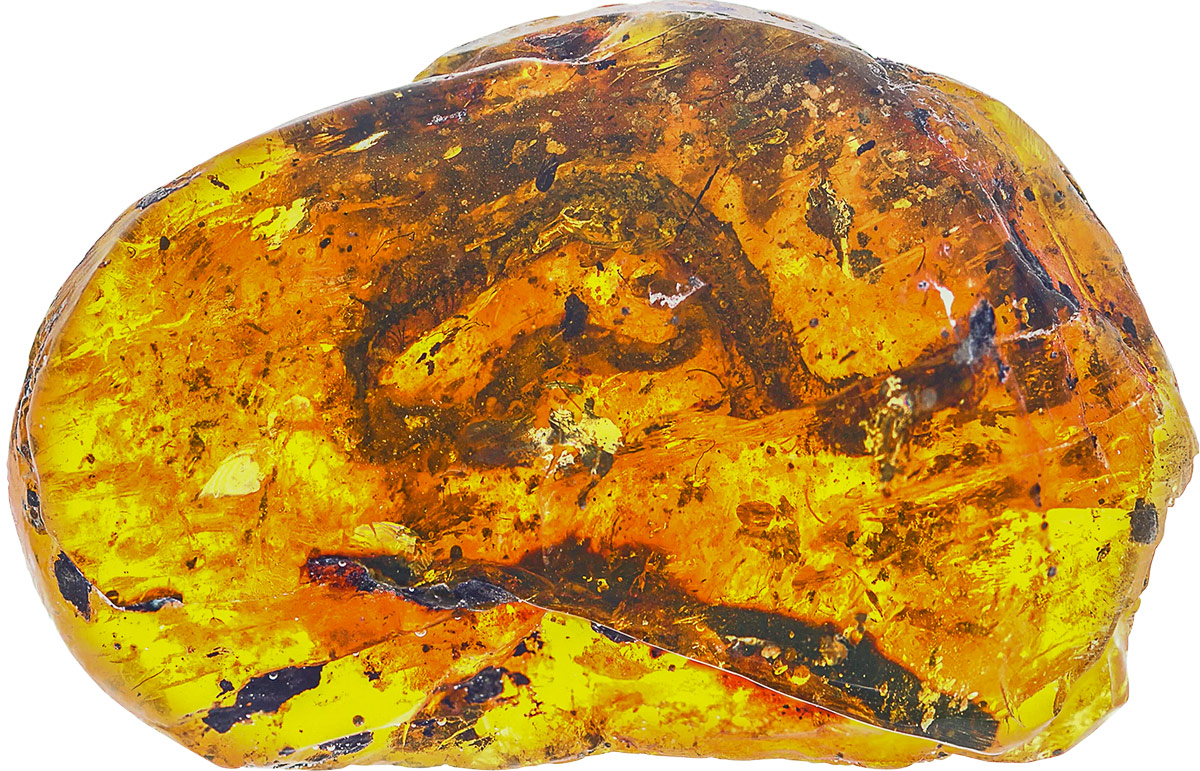Baby fossil snake further frustrates evolution

A spate of fossil snakes has led to excited science news reports in recent years.1 The latest is a tiny snake fossil (5cm or 2 in long) from Myanmar, thought to be an embryo or a very young baby. According to a member of the research team, University of Alberta palaeontologist Prof Michael Coldwell, “This is the very first baby snake fossil that we have ever found.”2 Believing it to be 98.8 Ma (million years) old, “from the age of dinosaurs”, they named it Xiaophis myanmarensis.3
The young snake’s bones were beautifully preserved in amber, a plastic-like material that was formerly tree resin. The fossil shows 97 vertebrae and ribs but the skull was not found. Some nearby shed snake skin fragments are assumed to be from the creature. However, there was no trace of hind legs or even a pelvis (hip), though these are known from certain ‘younger’ fossil snakes. This is significant because evolutionists believe that ‘earlier’ snakes (older than 100 Ma in their thinking) possessed legs but that these were gradually lost. Therefore, as one moves through the fossil layers to more and more ‘recent’ times, they expect a reduction in the size of snake legs until they are lost altogether. The fossil record does not support this idea and Xiaophis further frustrates the neat evolutionary story. While it lacked hip or limbs, ‘younger’ snake fossils possessed them, such as Eupodophis at 94 Ma.4 Modern snakes lack limbs.
Therefore, applying standard uniformitarian/evolutionary reasoning to the fossil evidence as it stands, legs were lost, regained and lost again during evolution, but this violates an evolutionary precept called Dollo’s Law.5

The findings were published in Science Advances and the scientists acknowledge that the anatomy of this creature is similar to the young snakes of two modern species, the Asian Pipe Snake and the common Grass Snake. In fact, “Xiaophis provides direct evidence that many aspects of snake vertebral ontogeny [the origin and development of snake spinal bones] have remained conservative for nearly 100 Ma…”3 In other words, the new fossil provides no evidence whatsoever that snake anatomy has altered during the alleged millions of years—hence the headlines about them being “frozen in time” and the admission that this represents, “A new chapter on early snake evolution.”6 The snake fossil record continues to say ‘No’ to evolution!
References and notes
- Bell, P., Standard snake evolution story stymied by spate of fossil discoveries, J. Creation 29(3):8–10, December 2015. Return to text.
- Briggs, H., Baby snake ‘frozen in time’ gives insight into lost world, bbc.co.uk/news, 19 July 2018. Return to text.
- Xing, L. et al, A mid-Cretaceous embryonic-to-neonate snake in amber from Myanmar, Science Advances 4(7), 18 July 2018 | doi: 10.1126/sciadv.aat5042; advances.sciencemag.org, accessed 9 October 2018. Return to text.
- Sarfati, J., Another leggy snake? What should creationists think? 29 April 2008. Return to text.
- Dollo’s Law disallows evolutionary reversals—see Bell, P., Evolution revolution, Creation 25(3):31, 2003. To be fair, many evolutionists have said it should not be regarded as a law in the same sense as e.g. gravity. Return to text.
- Simões, T.R., A new chapter on early snake evolution: the tale of the baby snake in amber, natureecoevocommunity.nature.com, 19 July 2018; accessed 9 October 2018. Return to text.




Readers’ comments
Comments are automatically closed 14 days after publication.